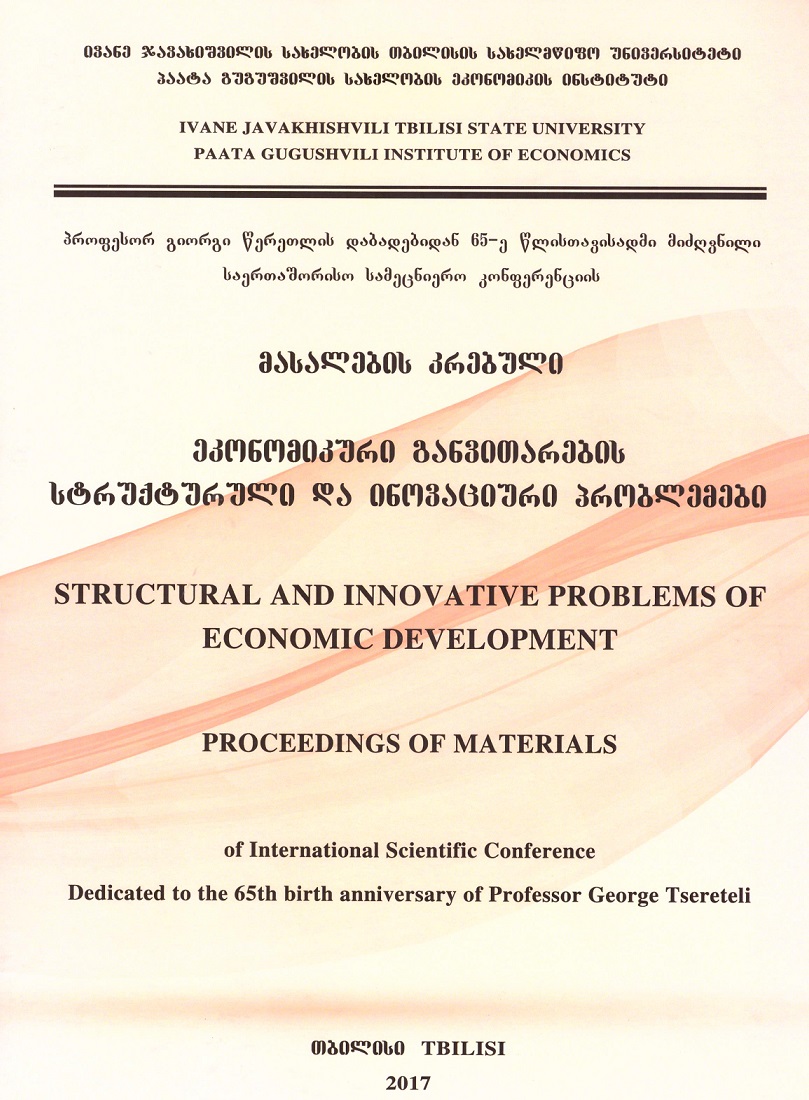
Ivane Javakhishvili Tbilisi State University
Paata Gugushvili Institute of Economics International Scientific

DEMOGRAPHIC COLLAPSE IN GEORGIA
Summary
The survey showed that the average income of respondent families is noticeably higher than the corresponding average for Georgian households (1,934 lari and 1,500 lari, respectively). At the same time, the average income of the families of female respondents is approximately 200 lari less compared to the income of male respondents (1800 lari and 2000 lari, respectively).
The high economic stratification of modern Georgian society was confirmed. - Only every 25th resident can be classified as rich, while almost every fourth person can be classified as poor.
The living wage assessed by respondents is 4.3 times higher than the official living wage in the country.
The marital status and status of respondents changes with age: if only 22.3% of respondents aged 15-29 were married, then among those aged 40-49 they were 77.8%. Among singles, the situation is the opposite: 74.6% among 15-29 summer respondents are in this status and only 7.1% among 40-49 summer respondents.
43% of respondents are not married for various reasons. 13.3% of respondents are in a de facto civil marriage, not secured by a corresponding legal or church agreement. Moreover, more than half of the respondents were in both civil and church marriages. Of every four legally established marriages, three are also supported by a corresponding certificate from the church.
The survey showed high tolerance of society towards the registration of a legal marriage. Only less than half of respondents (48.3%) are in favor of consolidating marriage with a legal certificate.
The number of those who believe that religion matters when choosing a spouse is 3.3 times higher than the number of those who do not consider this to be an obstacle to marriage (59.7% and 18.2%, respectively).
The survey found a marked difference between the best age for women to get married and the actual age at first marriage. For women to get married, the optimal age for marriage was considered 24.2 years by male respondents, and 24.7 years by female respondents; in fact, the average age of a woman entering into marriage for the first time is 29.4 years.
In recent years, there has been an increase in the age at marriage - compared to 2000, it has increased for women from 24.7 years to 29.4 years, and among men - from 28.4 years to 31.9 years. At the same time, there is also an increase in formalization of relations with representatives of the opposite sex, evasion of duties and responsibilities to family obligations.
Almost a third of unmarried respondents (31.8%) expressed their readiness to start a family in the next five years.
One of the hindering factors in creating a family is the lack of a desired partner. At the same time, the main reason for postponing marriage is economic conditions. – 2/3 of respondents named this reason as the main reason for delayed marriages.
According to respondents, the optimal number of children in a family is 2.74, which is significantly ahead of not only the average number of children in respondents’ families (1.45), but also the minimum level of children on average per woman for simple population reproduction (2.15).
Public morals and attitudes are noticeably more tolerant of relationships between an unmarried woman and a man than to the birth of children by an unmarried woman (34.0% and 19.4%, respectively). At the same time, the lower the level of the urban population in the total population of the region, the more categorical the population’s judgments and their attitudes towards extramarital affairs with a man of an unmarried woman, as well as towards the birth of children. The survey showed that every fourth respondent has one or more family members in exile.
The average age of a female emigrant is 1.6 years ahead of the age of a male emigrant (42.9 years and 41.6 years, respectively). Women account for 70.2% of emigrants, respectively, men - 29.8%.
More than 3/5 of the children of emigrants remain in their homeland in the care of other family members and loved ones. Almost every tenth child in such families was born in a foreign land.
After the restoration of Georgia's independence outside the homeland, more than 200 thousand children were born into emigrant families.
